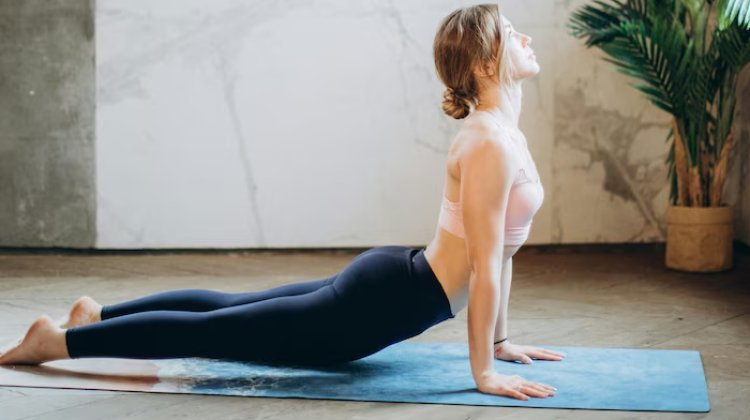How to pick the best sports bra if you've never worked out before
It's always crucial to dress right for the occasion. It's important to wear appropriate clothing. Here are all the things to consider while purchasing a sports bra.

INTRO
- Using a sports bra when exercising helps prevent pain and discomfort.
- While fitting more snugly than a typical bra, a sports bra shouldn't impede breathing.
- A poor decision could result in harm.
The majority of us have mixed feelings about going to the gym and working out. You would concur that everyone has trouble "getting ready for the gym," particularly women who find it difficult to put on a sports bra.You most likely don't have the proper sports bra, if you can relate to the last bit.
A sports bra is a vital item of apparel that is frequently overlooked yet is necessary for any workout outfit. However, choosing the best one can be difficult.
Fitness teacher Tanvi Parikh, who founded the online fitness coaching platform TNV Method, shares her story, saying, "I was very conscious about how the sports bra looked at the gym because I was on the heavier end when I started my fitness journey." I used to just wear my everyday bra at first. I began to experience pain and stretch marks around my breasts as a result. I also avoided going for any kind of run because I was very aware of how my body moved in public."
Parikh's experience is quite relatable; many of us, regardless of size, experience body self-consciousness when working out.
Different from usual ones
Because it supports the breasts during regular physical activity, wearing a sports bra during workouts is essential. Additionally, they are made to lessen breast movement, in contrast to conventional bras.
The contour of your breasts and the integrity of the breast wall can both be preserved by wearing the appropriate sports bra.
According to Parikh, a quality sports bra lessens the force that your body experiences on your breasts as it moves through different motions during your workout. In other words, it basically improves the comfort and effectiveness of your workouts and provides you the self-assurance to train in public.

Is there a right and a wrong?
"A sports bra should fit tighter than a regular bra but shouldn't restrict breathing; you should be able to fit two fingers between the straps and your shoulders," explains Richa Sinha, an expert at Cult, headquartered in Bengaluru. The fabric of the cup should be smooth; wrinkles are undesirable. Generally speaking, wrinkles in the fabric mean that the cup is excessively large."
- She goes on to say that if the straps on your sports bra are too thin or too tight, they may dig in during your workout and cause unpleasant, acute chafe marks.
- In addition, when you perspire while working out, the band of a tight sports bra may create red stains on your skin.
- According to Sinha, wearing a sports bra that is either too tight or too loose increases the likelihood of experiencing neck and back pain after working out. This is due to the fact that when you exercise, your bust moves about a lot and can put a lot of pressure on your neck and back if it is not squeezed in place.
- Additionally, if your bust isn't held in place when you move, the inside tissue will stretch out, which may result in drooping.
Furthermore, according to Sonia Bakshi, the creator of DtF Studio and a fitness specialist located in Ghaziabad, "A properly fitted sports bra is more than just comfortable; it is an essential component of your sporting gear that can affect your performance and general well-being."
Selecting the appropriate sports bra can prevent long-term damage to the ligaments supporting the breasts. Additionally, you can focus on your workout without being distracted by uncomfortable straps or an ill-fitting band when you wear a comfy sports bra. Having self-confidence in your sports bra can boost your motivation to finish challenging tasks and your sense of self.

According to a recent study, wearing a bra that is overly tight may also interfere with breathing and impair running efficiency. It has been suggested that runners wear a sports bra that is sufficiently supportive without being overly tight.
Picking the right one
The rule of thumb, according to certified yoga teacher Neha Lidder of Gurugram, is to pick a sports bra that fits well on your body.
"Sports bras may fit slightly tighter than your everyday bras, but your size is probably the same," adds Sinha in her explanation. Never forget to size up when purchasing a sports bra. Make sure you know your bra size every time you buy a new sports bra. Over the course of your lifetime, your size will fluctuate. Bra size is affected by changes in the body, including weight gain or reduction, pregnancy, hormones, and ageing."
In an attempt to make their breasts appear smaller and more toned, many women choose to size down. As this merely causes more suffering, this is a major myth.
"To choose the ideal sports bra, you must first grasp the major size components and how they contribute to a pleasant and supportive fit," Bakshi states.
Here are the main elements to consider:
Band size: The sports bra's band provides the majority of its support. Measure around your ribcage, just below your bust, to determine the appropriate band size. Ensure that the tape measure fits comfortably, without being too tight. Round an odd measurement to the next even number. Your band size is indicated by this rounded-off value.
Cup size: Your breast volume and cup size are proportionate. Measure around the largest part of your bust, keeping the tape measure parallel to the floor, to find your cup size. Deduct your band size from the specified length. Your cup size is correlated with the difference in inches (for example, 1 inch = A cup, 2 inches = B cup).
There should be no openings or spaces between the cups and your breasts. The cup size is too small if your breasts protrude from the sides or top. Nonetheless, the cup size is excessively large if there is extra fabric or creases.
Strap adjustment: One crucial role the shoulder straps perform is providing additional support. To ensure that the straps suit your body precisely, make sure they are flexible. Make sure they are the right length to provide support without digging into your shoulders.
Underwire vs wireless: While some sports bras are wireless for a more comfortable fit, others have an underwire for added support. Make your selection based on your comfort level and personal preferences. Make sure your underwired bra doesn't pierce or stab your skin if you wear one.
Material and stretch: Take into account the sports bra's materials and stretch. Select a supportive, breathable fabric that is also absorbent. While retaining support and form, a good sports bra should be flexible.
Do a jump test prior to reaching a final decision. Test the sports bra's ability to minimise breast movement by jumping up and down. Try a different size or style if you're uncomfortable or feel like you're bouncing too much.
Impact matters
First, think about the kinds of activities you'll be undertaking to determine the appropriate level of bra support. Sports bras are made to offer three different levels of support: medium, high, and low, depending on how demanding the activity is.
"The higher the impact (more bouncing, jumping, or intense movement), the more support you'll likely need," Sinha explains.

In various sports bra categories, keep an eye out for the following features:
Low-support bra:
- Narrower straps and bands with lighter weight
- Pullover style in S-L sizes without band adjustment
- Supporting your breasts against the chest wall are compression bras.
Medium-support bra:
- more severely restricts breast mobility than low-profile bras
- broader straps and bands
- S-L sized pullovers or band-cup-sized hook closures are available.
- can be encapsulation styles with separate cups (forming breast shape) or compression styles (holding breasts to chest wall).
High-support bra:
- Widest bands and adjustable shoulder straps
- For the best support, encapsulation, and compression designs with distinct cups are most commonly used.
- Closures with hooks and loops
"The finest sports bras for strength training, yoga, and walking are low-impact models. The breasts are not meant to jump out of them. On the other hand, medium-impact sports bras provide greater support and are perfect for moderate activities like cycling or hiking. Last but not least, Parikh notes that high-impact sports bras are made for strenuous activity.
Maintenance tips
"Clean your sports bra every time you wear it. These days, their construction allows for effortless hand or machine washing. But avoid washing your sports bras in hot water, advises Lidder.
However, Parikh advises keeping a few sports bras in the wardrobe. It's critical to pay attention to how you store sports bras in addition to maintaining sports bra hygiene. A sports bra can last you a long time if it is maintained with the right care.













